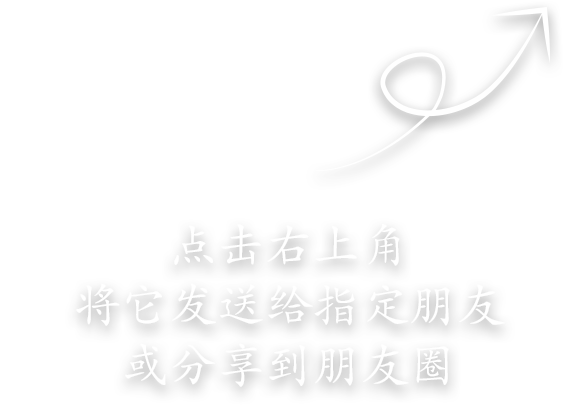Growth Opportunities of Alternative Investment Industry and its Ecosystem in Singapore
Thank you for inviting me to the AIMA Singapore Annual Forum. It is my pleasure to join all of you again this year.
2. Last year, the financial markets were challenging. The business environment was fraught with global geopolitical uncertainties, inflationary pressure, and rising interest rates after a prolonged period of easy monetary policy. Global equities and bonds fell between 16 to 20%.
3. Enter 2023, and the conditions have gotten even tougher. Inflation remains a challenge in the short term. Geo-political fragmentation will increase risks and volatility of returns in the medium term. And climate change remains a clear and present danger that will affect returns in the longer term. The recent concerns over the health of US regional banks, the loss of confidence in Credit Suisse and their potential contagion on the broader banking system are stark reminders of fragility in the global financial system. Central banks around the world have taken swift actions to mitigate the contagion risk. However, they face the challenge of navigating a narrow path at the intersection of price stability and financial stability.
4. Amid this operating environment, the performances were mixed for alternative asset managers. On the whole, the performance of hedge funds fell 4.2% [1] in 2022 according to the HFRI 500 Fund Weighted Composite Index. Drilling in deeper, hedge fund performance was mixed across different strategies. While the HFRI 500 Event driven and Equity driven indices underperformed in the range of -6% to -13% [2] , the HFRI 500 Macro Index surged 14.8% [3] , mainly driven by fundamental and trend following commodity and quantitative strategies. So there remains opportunities to generate good returns with hedge fund strategies even in turbulent markets.
5. In the private markets, the stimulus-fuelled market of 2021 has turned slightly less sanguine. Higher interest rates have led to lower valuations and slower deal activities. The aggregate value of private equity exits globally was down 32% [4] in 2022.
6. On the other hand, private credit maintained its momentum. Fundraising for private credit funds finished the year on a strong note, surpassing US$200 billion [5] for the third consecutive year. Total private credit AUM grew 12% [6] to about US$1.4 trillion in 2022.
7. Despite the mixed showings, the alternative investment industry as a whole has remained relatively resilient. This is in terms of both AUM growth and performance. According to Preqin, the alternative investment industry AUM is forecasted to grow at a CAGR of 9.3% [7] from 2021-2027. This is higher than the projected CAGR of 4 to 6% [8] for the global asset management industry. And demand for alternative investments will continue to be driven by diversification from the public markets, and the search for alpha.
ALTERNATIVE INVESTMENT INDUSTRY IN SINGAPORE
8. Against this landscape, Singapore’s AUM grew 16.4% [9] in 2021 to reach US$4 trillion [10] , faster than the global AUM growth of 12% [11] . At the same time, our alternative AUM continued to grow faster than the overall industry AUM, at 30% year-on-year [12] . Collectively, hedge funds and PE/VC accounted for two-thirds of the total alternative AUM in Singapore.
9. A number of global alternative asset managers have also set up their offices in Singapore. As of end 2022, more than half [13] of the top 50 global alternative asset managers and about 40% [14] of the top 50 global hedge fund managers have set up offices here. A number of them also have their APAC or Southeast Asia hubs with senior regional leaders based here, and built their investment, value creation and other capabilities in Singapore. They also collaborate with our local universities and polytechnics to co-develop training programmes, and grow the pool of junior analysts through internships.
10. From Singapore, alternative asset managers can tap into the capital pool and growth opportunities in the region.
11. Firstly, the growing wealth and sophistication of investors is driving demand for alternative investment products. There is a growing pool of institutional investors and asset owners, including public pension funds, endowments and family offices in Singapore. And they are allocating into alternative assets. This ecosystem presents private market General Partners with co-investment opportunities alongside their institutional Limited Partners, and also allow their portfolio companies to tap into an expanded business network.
12. Secondly, advancement in technology such as machine learning and artificial intelligence or AI has the potential to transform the asset management industry. A number of alternative asset managers are leveraging on these technologies to create new strategies, or gain an edge to improve performance. Some of the use cases of AI include research, portfolio optimisation, algorithms for high speed trading, and client enablement. Some of these managers have also anchored their technology capabilities in Singapore.
13. Blockchain technology and smart contracts also have the potential to improve the transparency and efficiency of asset ownership. They can also support fractional ownership and allow alternative assets to be more accessible to investors. Through Project Guardian, MAS seeks to test the feasibility of application in asset tokenisation and decentralised finance in partnership with the industry. To-date, use cases such as global liquidity pools involving tokenised JPY and SGD deposits, and digitally native wealth management products have been trialled. MAS will also work with the industry on other use cases and to link up liquidity pools.
14. In private markets, MAS has identified private credit as a key growth area. Private credit is still relatively more nascent in Asia compared to the US and Europe. According to projection from Preqin, the private credit AUM in the APAC region is projected to grow at a CAGR of 9.1% for 2021-2027. In 2021, AIMA’s Alternative Credit Council or ACC, Simmons & Simmons and TXF Intelligence also introduced a research paper on the role of Private Credit in Trade and Commodities Finance. The paper provides investors with data and insights on the risk and return opportunities in the global trade finance market. Earlier this year, the AIMA ACC further launched a global trade finance working group to increase participation by alternative lenders and raise awareness in trade finance as an asset class among investors. These capital flows and efforts will channel more long term capital to the growing number of enterprises in the region.
POSITIONING THE ASSET MANAGEMENT INDUSTRY FOR GROWTH
15. The asset management industry is also a key focus of MAS’ asset class strategy. Let me highlight a few key initiatives in MAS’ Industry Transformation Map 2025 that are relevant to the asset management industry.
Growing the Fund and Capital Market Ecosystem
16. Firstly, we will continue to develop Singapore as a fund domiciliation centre of choice. Various fund structures, such as the Variable Capital Company or VCC and Limited Partnerships, are available for alternative managers to use as investor facing pooling vehicles and master fund for investments. In particular, the VCC can be used either for an open-ended fund for liquid strategies or closed-end private funds. And as a corporate structure, a VCC can benefit from Singapore’s wide double taxation agreement (DTA) network for its investments in the region.
17. The VCC saw positive traction with both traditional and alternative managers. We have more than 800 VCCs to date, and a number of these VCCs were set up for alternative strategies. To support the broader adoption of the VCC, we have extended the VCC Grant Scheme for another two years to January 2025 to defray the costs for General Partners’ legal, tax and compliance advisory costs of setting up their first VCC.
18. For the hedge funds community, Singapore has a vibrant foreign exchange (FX), fixed income, rates and commodities markets to facilitate risk taking and hedging. In FX, we will continue to grow the electronic FX trading ecosystem to offer deep FX liquidity and execution capabilities. This will translate to tighter bid-ask spreads and improved fill-ratios. We also aim to crowd in more liquidity takers to connect to the dealer platforms that have already set up their pricing engines in Singapore.
19. We launched the Singapore Funds Industry Group (SFIG) in 2021. The SFIG is an MAS-industry partnership that promotes Singapore as an onshore funds hub, and works on industry initiatives such as fund settlement utility, and capacity building for fund directors and professionals. Just last week, a few of SFIG members and our MAS colleagues were in New York to promote Singapore’s asset management and fund eco-system. AIMA, which is an active member in the SFIG, has also been providing useful industry feedback through the forum. I would like to take this opportunity to thank Ross Crawford, Exco Chairman of AIMA Singapore and Kher Sheng, Co-Head of APAC for their valuable contribution in the SFIG.
Digitalising our Financial Infrastructure
20. Next, we will support the digitalisation of our financial infrastructure. In recent years, alternative asset platforms have offered digital solutions to make private investments more accessible or tradeable. A number of hedge funds and private equity and credit funds have also listed on such platform to capitalise on these opportunities.
21. As mentioned earlier, MAS is also working with the industry to explore the potential of distributed ledger technology, and facilitate the tokenisation of financial and real economy assets. The industry on its own is also not staying still. For example, AIMA has launched the APAC chapter of its Digital Asset Working Group, which examines topics such as Web3.0 and decentralised finance. This collaborative approach will be key to growing the digital assets ecosystem in a dynamic and fast-evolving environment.
Catalysing Asia’s Net Zero Transition
22. Asset managers have a role to play in mitigating climate change, and supporting the net zero transition. MAS intends to work with major financial institutions including asset managers to:
a. First, develop credible transition plans. There are ongoing efforts by international organisations and alliances such as the OECD, Climate Policy Initiative and GFANZ, which the Net Zero Asset Managers Initiative is a part of, to establish what makes for credible transition plans for asset managers.
b. Second, accelerate client engagement and stewardship. Asset managers have significant influence in steering your portfolio companies towards greener and transition outcomes.
c. Third, scale up transition finance.
- Singapore is uniquely positioned to drive this. We are in a region with significant needs. Within Southeast Asia, US$1 trillion in annual investments is needed per annum to close the emission gap by 2030 [15] , while current investment level is less than US$20 billion per annum. The investment opportunities are thus wide ranging and yet to be fully tapped.
- At the same time, Singapore has a strong ecosystem to support the structuring and scaling of blended finance for the region.
- There is a good presence of Multilateral Development Banks (MDBs) and development financial institutions, with deep experience in blending capital to finance regional infrastructure projects. There are also other players in this space such as the private wealth cluster, family offices and foundations.
- This presents a good opportunity for asset owners and managers to participate in financing solutions for decarbonisation projects in the region.
d. And lastly, we will work with financial institutions and data providers to support the collection of quality ESG data and participate in MAS Green FinTech initiatives.
23. In the alternative space, General Partners are growing their ESG capabilities and offerings in their Singapore office. It is also encouraging to know that a group of alternative asset managers including Apollo Global Management and Oak Hill Advisors have partnered with industry bodies such AIMA, the Loan Syndications and Trading Association and the Principles for Responsible Investment, to launch the ESG integrated Disclosure Project to enhance transparency and consistency for both private companies and credit investors.
Fostering a Skilled and Adaptable Workforce
24. Lastly, MAS remains committed to supporting General Partners’ access to high quality talent. Last year, I shared briefly about the introduction of the Complementarity Assessment Framework or COMPASS for employment passes. The changes in employment pass policies will enable the entry of high-quality global talent in a more transparent and balanced way, giving businesses greater certainty in manpower planning. The Ministry of Manpower has since published this points-based assessment framework, and has been progressively releasing details on the scoring criteria.
25. In addition, the Ministry of Manpower has introduced a new Overseas and Networks Expertise Pass, or ONE Pass, which is available since the start of this year. There will also be a longer 5-year employment starting from September for experienced tech professionals in short supply. The ONE Pass is a 5-year personalised pass that provides greater flexibility for top global talents to take on multiple roles in Singapore. A number of senior leaders in the asset management sector have already successfully obtained their ONE Pass. The longer 5-year employment pass for tech will also give greater certainty to both tech professionals and employers and allow Singapore to better retain tech capabilities.
26. We also want to continue to build a skilled and adaptable Singaporean workforce in finance. That means investing in our finance professionals throughout their careers. We encourage alternative asset managers to tap on MAS and the Institute of Banking & Finance’s schemes to groom graduates from our polytechnics or universities. These can be through overseas postings, or career conversion programmes for tech skills. The Wealth Management Institute’s Advanced Diploma in Asset Management (ADAM) also aims to equip aspiring new entrants and mid-career convertees to secure careers in asset management. It also supports the upskilling of existing junior professionals in asset management firms, family offices and private banks. We are also appreciative that AIMA and the Chartered Alternative Investment Analyst Association are continuing to provide training and support to young professionals in the sector through your scholarship award.
CONCLUSION
27. Looking ahead, MAS will continue to need strong and committed partners to grow our asset management sector. We value AIMA’s strong partnership, representation of your members’ voices, and proactive contributions to MAS’ initiatives. We look forward to continuing this partnership, to steer and grow the alternative asset management industry in Singapore amidst the uncertainty and challenges ahead. Thank you.























































First, please LoginComment After ~